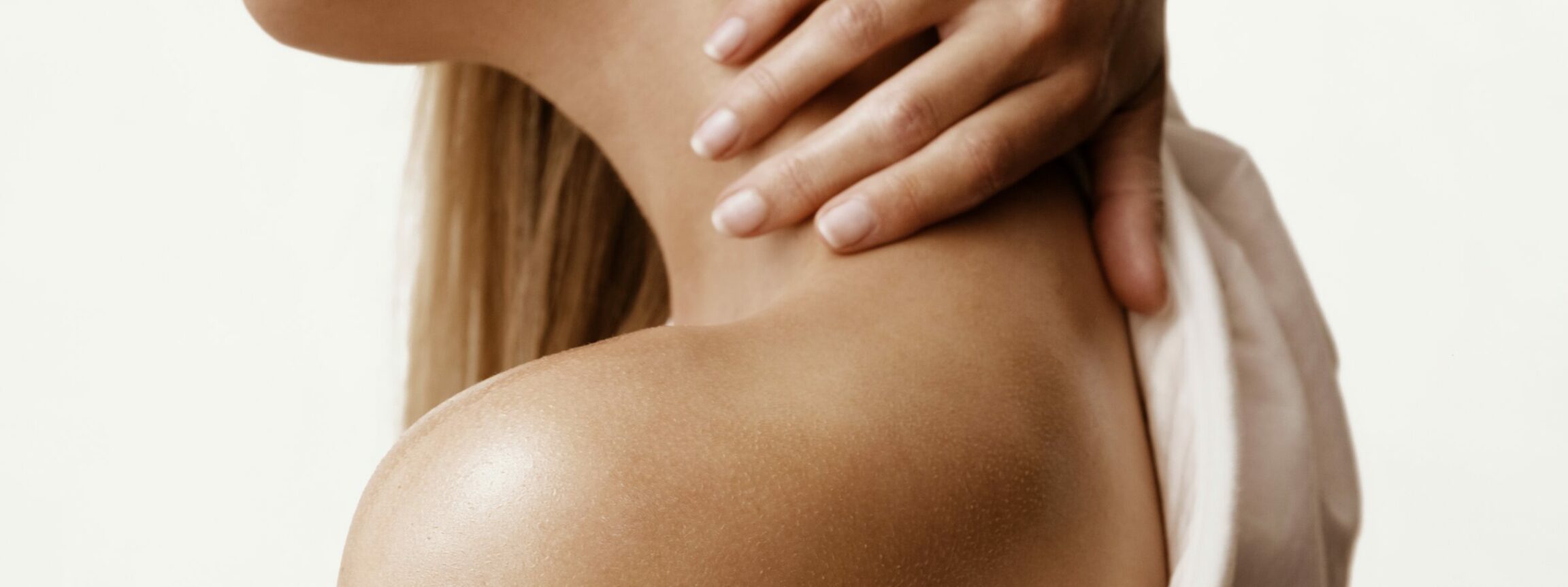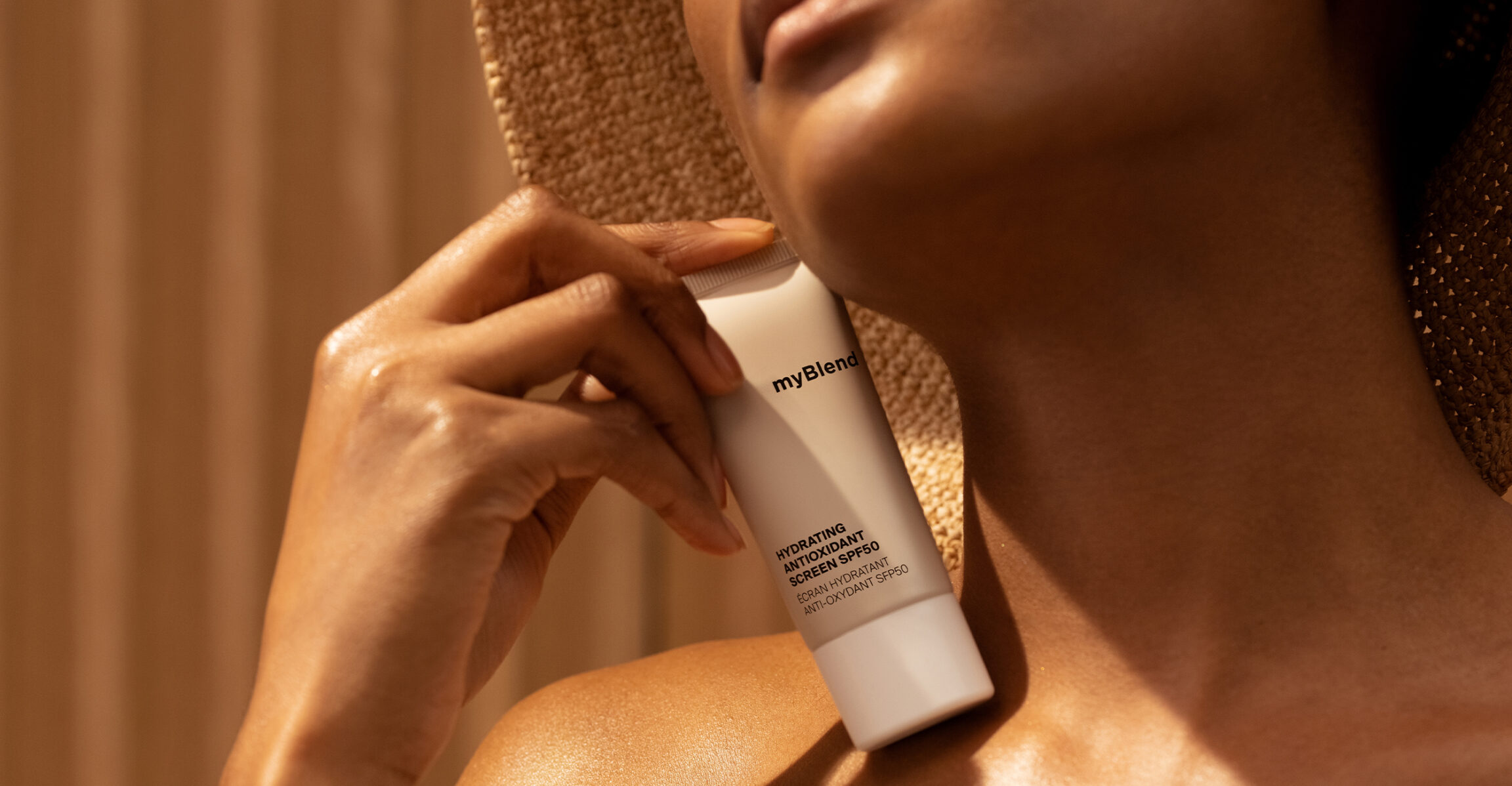


Nutrition / Advices
June 21st, 2023
sun spots: our advices for a shadow-free summer
By Florence Masson, dermatologist and aesthetic medicine specialist.
What could be more natural than wanting to get out and enjoy the first rays of sun? But sometimes all it takes is one day of too much sun for unsightly brown spots – also called “pigmentation spots” to appear.
A dark spot or pigment spot is a seasonal reaction caused by the UVA and UVB electromagnetic radiation emissions from the sun, which comes in the way of your healthy glow… So, what can be done about it? We explain everything you need to know about this complexion-muddying phenomenon and the 5 essential steps you can take to prevent it!
HOW DO PIGMENT SPOTS APPEAR?
Behind each tan hides a natural biological reaction. After it has been exposed to the sun, the skin turns brown: this new colour is brought on by the presence of melanin produced by cells known as “melanocytes”. By filtering 20% of UVB and 60% of UVA, this melanin provides genuine natural protection against the penetration of the sun’s rays and their potential harmful action. But when that exposure is repeated and excessive, the production system is disrupted: harmless, but often unsightly, pigmentary anomalies then begin to appear on your face.
WHERE DO THEY COME FROM?
The appearance of these dark spots is associated with ageing skin or hormone fluctuations. There are various forms:
- Solar or actinic lentigines
These hyperpigmented lesions appear on areas exposed to UV rays and increase in size and number with age. Photoageing begins in childhood and its severity depends on the intensity and length of time spent in the sun. The damage caused by ultraviolet rays builds up over time and affects your “sun capital”, your skin’s ability to protect itself by synthesising melanin. Once this ability has been compromised, the skin’s pigmentation can get completely out of balance! When excess melanin is produced, melanocytes are distributed unevenly along the basal membrane of the epidermis: an uneven scattering of spots occur.
- Melasma
This localised hyperpigmentation is very common and totally harmless. It tends to develop in women from the age of 20 or 30, sometimes later. The causal link between brown spots and sun exposure is now clearly proven. When exposed to UV rays, melanocytes proliferate and melanogenesis accelerates. The effect is significantly amplified by hormones, whose influence on skin uniformity is widely understood.

5 EFFECTIVE WAYS TO DEFEAT THEM
Even though they have different causes, the same preventive measures should be followed to safeguard the skin against solar lentigines or melasma:
- Simply protect your skin from the sun!
Because the sun encourages and facilitates the appearance of new spots. To do this, apply a sunscreen evenly and generously several times a day. Use a high protection factor of between SPF 30 and 50+, depending on your skin type and the level of sunshine. Repeat the application ideally every 2 hours. - Everything in moderation
Even with good sun protection, adapt your behaviour to the season: reduce the time you spend in the sun, avoid peak sunshine hours, wear long clothes, better yet those with anti-UV protection, and a wide-brimmed hat. - Avoid using irritating creams on the skin
Don’t have peeling treatments because they are too aggressive and poorly tolerated in summer. They can cause inflammation that can aggravate hyperpigmentation. - Hydrate your skin
That’s a good habit to get into and keep up all summer long! Give your epidermis a hydration-boosting treatment to evening to help the skin barrier replenish itself. - Eat a healthy and balanced diet
Fill up on carotenoids! These natural pigments, which give various fruits their yellow, orange and red colours, increase the minimal erythema dose (MED), which is the smallest amount of light that can cause sunburn after 24 hours. Consume without moderation. And the same applies to antioxidants such as polyphenols or flavonoids found in red berries: a tasty cocktail to ward off the effects of UV rays!
So remember, you’re not doomed to get pigment spots: by taking a few precautions, you can protect your skin well. And though sun exposure is essential for well-being, remember that your best option is protection, and that a gradual tan is the ideal path to a beautiful, even and lasting tan!